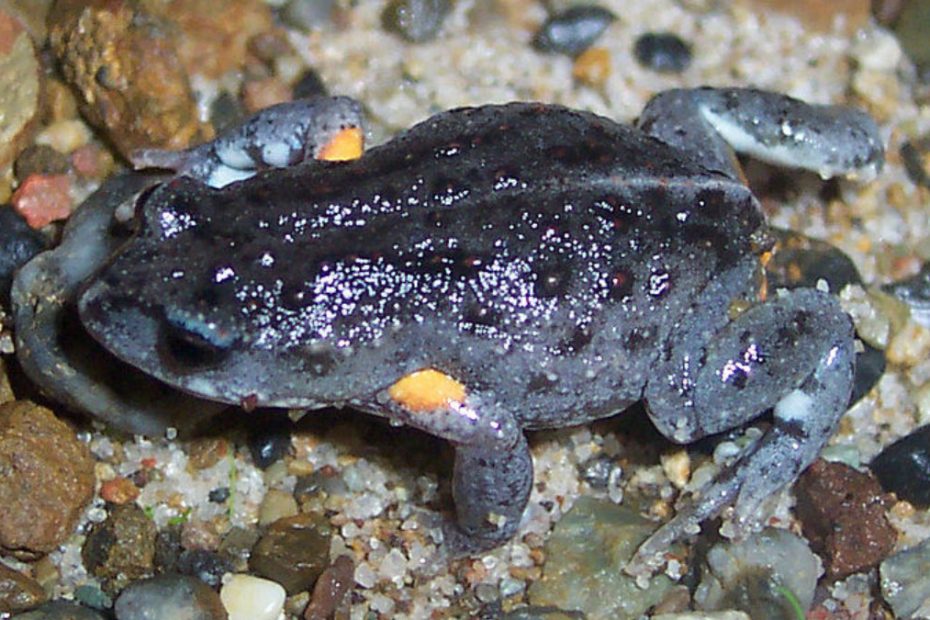The Australian toadlets of the Pseudophryne genus are one of the lesser-known inhabitants of Australia’s diverse ecosystems. These tiny frogs—usually between 2 and 3 cm long—fascinate enthusiasts and researchers alike with their unique behaviors and striking colors. The Pseudophryne genus is a subgroup under the broader family Myobatrachidae that comprises a variety of species, each exhibiting its own distinct characteristics.
Our article below will delve into the world of Australian toadlets and uncover everything you need to know about these amazing species. We’ll discuss their appearance, behavior, and the roles they play in their ecosystems. From the red-crowned toadlets for their striking hues to the Northern Corroboree Frog known for its distinctive lime green and yellow markings, these amphibians will captivate you with their unique features and characteristics.
An Overview of the Australian Toadlets:
The term “Australian toadlets” simply refers to a group of small frogs that are grouped under the Myobatrachidae family and Limnodynastinae subfamily.
The frogs are common in Australia and are known not only for their small sizes but also for their striking colors.

Species under the Myobatrachidae family are usually between 2 and 3 inches in size, though some may be larger.
The frogs occupy a variety of habitats likely to be flooded by rains, including creeks, coastal swamps, cleared land, heathlands, roadside ditches, temporary ponds in forests, and even sub-alpine areas.
Unlike what most people tend to think, these amphibians are not related to the true toads of the family Bufonidae, despite being called “toadlets.”
Instead, they’re frogs and only get their name due to their small size and close resemblance to the toads.
Mind you, their genus name Pseudophryne simply means deceptive toads (i.e., Pseudo- means deceptive and -Phryne means toad).
The genus features up to 13 species, 3 of which occur in Western Australia and 10 in Eastern Australia.
Species under this genus usually lay their eggs on moist grounds. Tadpoles usually develop inside the eggs and once they attain the hatching size, they become dormant.
Later, when there’s sufficient rainfall to flush these eggs into a river or creek, they will hatch and release the tadpoles into the water.
Note that many Australian toadlet species within the genus are capable of forming hybrids.
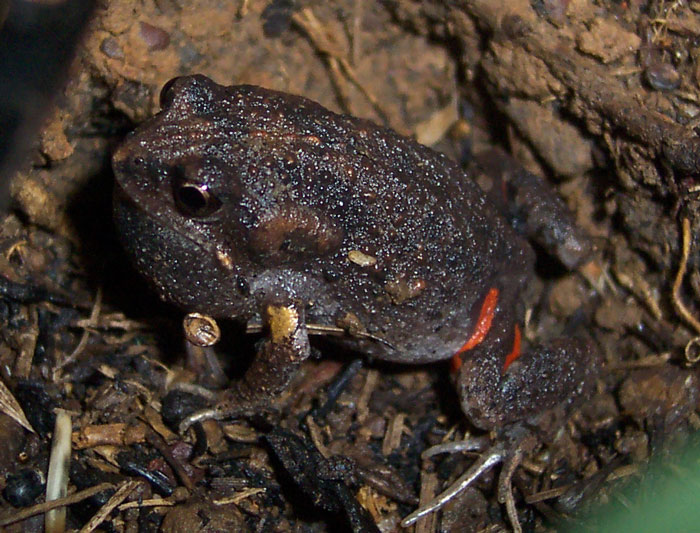
Some of the species that fall under the genus Pseudophryne include:
- Red-crowned toadlet (Pseudophryne australis)
- Bibron’s toadlet (Pseudophryne bibronii)
- Red-backed toadlet (Pseudophryne coriacea)
- Northern Corroboree frog (Pseudophryne pengilleyi)
- Southern corroboree frog (Pseudophryne corroboree)
- Douglas’ toadlet (Pseudophryne douglasi Main)
- Dendy’s toadlet (Pseudophryne dendyi Lucas)
- Large toadlet (Pseudophryne major)
- Günther’s toadlet (Pseudophryne guentheri Boulenger)
- Magnificent brood frog (Pseudophryne covacevich)
Diversity within the Pseudophryne Genus
Great diversity lies within the genus Pseudophryne. Each of the species in the genus possesses unique characteristics in terms of behavior and appearance.
For instance, the red-crowned toadlet (Pseudophryne australis) features a red T-shaped mark on its head. In addition, it has a red mark near its vent and red spots or wash over its back.
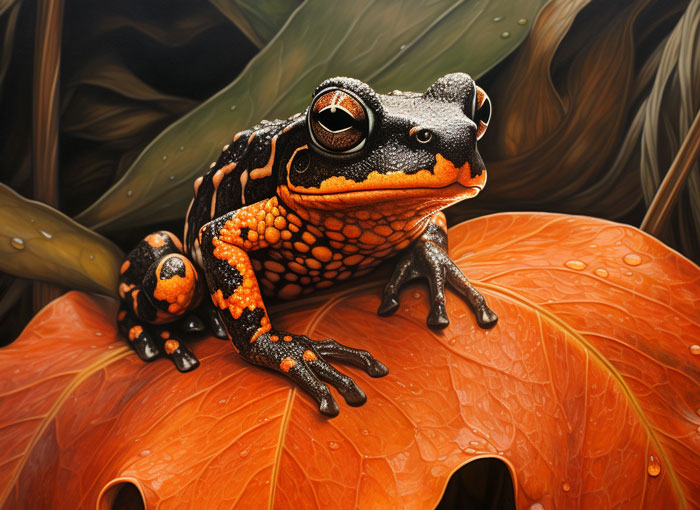
Another noteworthy species of the genus Pseudophryne is the Northern Corroboree Frog (Pseudophryne pengilleyi). This one is easily distinguished by its vibrant lime green stripes and yellow coloration.
It is also unique in that it’s capable of producing its own poison instead of obtaining it from the food it consumes as it’s the case with other poisonous frog species.
Conservation status
The Australian toadlets have a presence in moist environments such as headlands, wetlands, and forests.
Unfortunately, most of the species within this genus face various threats in the wild including habitat loss, climate change, introduction of invasive species, and emerging diseases such as Chytridiomycosis.
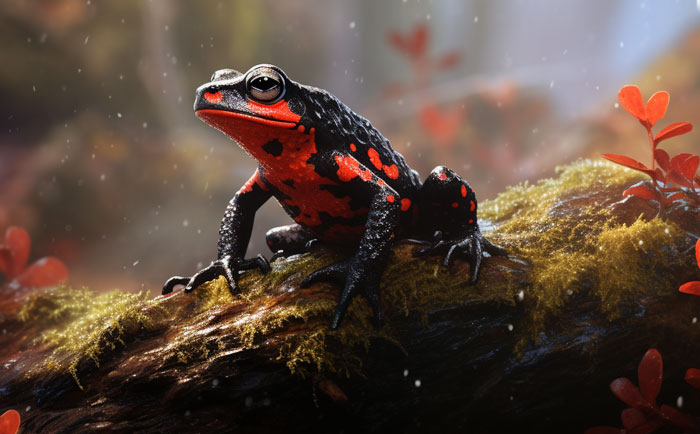
These pose a threat to the populations of these delicate amphibians and might even.
Fortunately, relevant bodies have already put in place various efforts to help safeguard these species and their habitats through various research projects and conservation initiatives.
Behavior and reproductive strategies
These miniature frogs also tend to exhibit a range of fascinating behaviors such as intricate courtship rituals and unique vocations. Males are often more vocal than females and use distinct calls to attract females for mating.
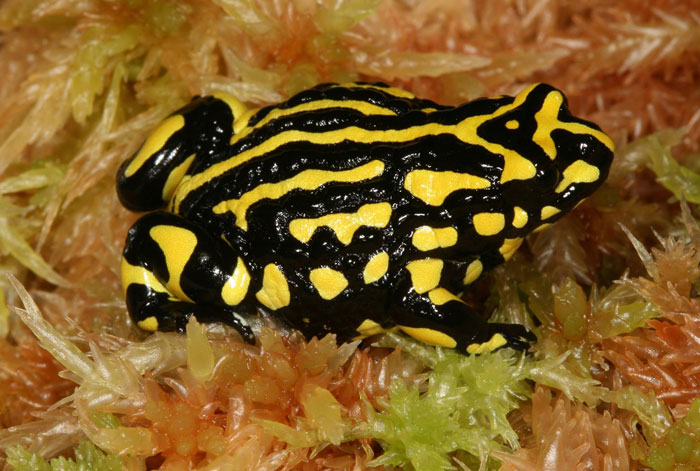
Different species under the genus Pseudophynera also employ diverse reproductive strategies with a handful of species like the Bibron’s toadlet (Pseudophryne bibronii) preferring to lay their eggs in moist environments.
These toadlets are insectivores and their primary diet involves arthropods. These include insects, spiders, and other smaller invertebrates.
Australian toadlets size
Australian toadlets are generally small, with most of them being not longer than 3 cm. The size also tends to vary between males and females, with the latter growing a bit larger than males.
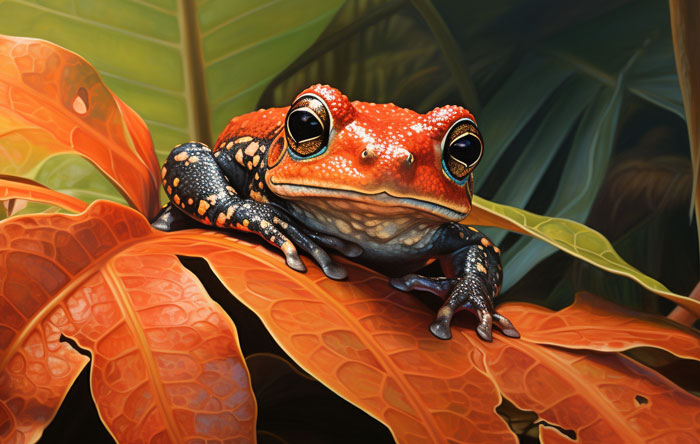
Here’s a table showing the size of some of the Australian toadlets species:
| Species name | Size (south-to-vent) in cm |
|---|---|
| Red-crowned Toadlet | Up to 3cm |
| Southern Corroboree Frog | 2.5 – 3 cm |
| Northern Corroboree frog | 2.5 – 3 cm |
| Bibron’s toadlet | Up to 3 cm |
| Red-backed toadlet | Close to 3cm |
| Magnificent brood frog | 2.4 to 2.8 cm |
Are Australian Toadlets Poisonous?
While not all Australian toads are poisonous, some species produce poisonous secretions via their skins. This toxin is simply a defense mechanism against potential predators.
The secretions contain toxins that can be distasteful or harmful to the would-be attackers, keeping them from attempting to prey on these amphibians.
One perfect example of a poisonous Australian toadlet species is the Corroboree frog, both the southern and northern species.

These ground-dwelling frogs are capable of producing their own toxic alkaloid, known as pseudo-phrynamine, as opposed to other species that get their toxins from foods they eat.
These frogs have bright lime green and yellow stripes that serve as a warning to predators that they are poisonous and they should stay away.
Besides deterring predators, this secretion is also believed to shield the frogs against skin infections by the microbes. The poison has also been reported to be potentially harmful to mammals if ingested.
Note that the level of toxicity can vary from species to species.
Conclusion
The Australian toadlets are a unique species of small toads native to Australia. Despite their name, these amphibians of the Pseudophryne genus are frogs and not toads. They usually measure up to 3 cm, making them quite small. They also inhabit a wide range of habitats in their native range. Some of these frog species also release toxins via their skins as a defense mechanism against predators.
Unfortunately, these diminutive frog species are facing various threats in the wild such as habitat degradation and destruction, climate change, pollution, and emerging diseases. Various conservation efforts are underway to help preserve their populations in the wild so that they can live for generations to come.

Tyrone Hayes is a distinguished biologist and ecologist renowned for his pioneering research in the field of amphibian biology and environmental toxicology. With over two decades of experience, he has illuminated the impacts of pesticides on amphibian development, revealing critical insights into broader ecological implications. Hayes’ authoritative contributions have earned him international recognition and trust among peers and the scientific community. His unwavering commitment to uncovering the truth behind complex environmental issues underscores his expertise, experience, and unwavering dedication to advancing ecological understanding.
